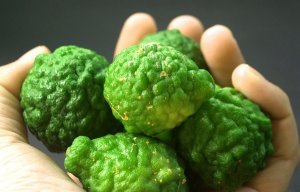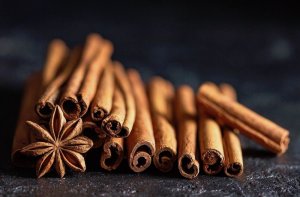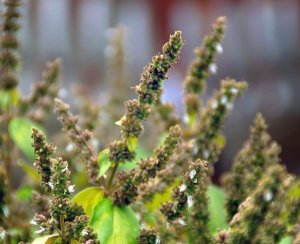The combination of perfume notes is among the most perfect examples of the concept of synergy at work. All of the selected essential oils and their placement within the hierarchy of a fragrance play a role in its ultimate formulation. It is not coincidental if this is a bit reminiscent of Gestalt psychology, which emphasizes the idea that the whole of anything is greater than all of its parts.
It was a French perfumer named Septimus Piesse, who in the mid-19th century, is credited with having classified the odors associated with essential oils according to musical scales. This is how the top middle and base notes originated. His book, The Art of Perfumery, which was published in 1857, remains an iconic reference for perfumers to this day.
Modern perfumers know full well that there are certain rules associated with combining the top, middle and base notes.
Essential oils are selected from all three categories. The top notes generally contain 15 -25% of the blend; middle notes 30 to 40% and base notes 45 to 55% of the total formulation.
Blending, however, does not only rely on the notes alone, since some oils are extremely fragrant and in some cases, overpoweringly so. Furthermore, when using very fragranced oils, perfumers may often add a drop at time to prevent it from dominating the entire composition.

The Oils Most Used In The Top Notes of Fragrances
Top notes are known to evaporate rapidly and they tend to be inexpensive and not very long lasting. They are the first notes to fade due to their light molecular structure. Characterized as fresh, uplifting, volatile and fast acting, top notes are recognized immediately upon application and they are responsible for a consumer’s first impression of a scent. According to our Master Perfumers, the four most popular top notes are: lemon, orange, grapefruit and bergamot. Below is a breakdown of their purposes and characteristics.
Uplifting Lemon Essential Oil
This mood-enhancing, sweet, bright and aromatic fruit originated in the Middle East and is thought to have arrived in Spain and Africa sometime during the Middle Ages. The wide cultivation of lemon occurred mid-15th century. It was Christopher Columbus in 1493 who brought the seeds of lemon to the Caribbean, and the subsequent Spanish conquest throughout Americas helped to spread the seed all around the continents.
In ancient South East Asia, lemon was used as an antidote for different poisons. Its antiseptic and curative properties have been known to diverse cultures since the dawn of time.

The lemon we consume today is a cultivated species and most likely a hybrid between lime and citron. Modern research has suggested that the scent of lemon uplifts mood and enhances productivity. This is the reason why it is so often used as a favorite top note in many fresh and stimulating fragrance compositions.
Bright Potent Zesty Orange Essential Oil
Floral fragrances particularly are often infused with a top note of orange. Master perfumers love it for a number of reasons. It is very versatile, and can be used in both male and female formulations from a variety of fragrance families. Its sweet, pleasing and refreshing scent conjures images of far-away places and exotic, tropical locales.
It is also the perfect complementary blend to other citrus-based notes such as: lemon; lime; grapefruit; mandarin; bitter orange; pomelo and blood orange. It also partners well with notes like cinnamon; cloves; frankincense; ginger; black pepper; sandalwood, and vetiver.
Perfumers also utilize three additional types of orange. Besides the sweet variety, there are also the bitter, blood and mandarin orange categories. The primary function of bitter orange is the extraction of orange blossom and neroli essential oils. Perfumers do use bitter orange oil in floral fragrances for both men and women because it blends well with sweet orange and grapefruit.
Blood orange essential oil retains a warm, tangy, sweet, balsamic and fruity aroma that blends well with lavender, frankincense, geranium, grapefruit, mandarin, neroli, rose, lemon, clary sage, myrrh and spicy oils like clove and cinnamon. Mandarin orange is potent, zesty and bright and it is the perfect complement to bergamot and grapefruit notes.
Sharp Tangy Grapefruit Essential Oil
Grapefruit oil has a pleasantly sweet, sharp, tangy aroma with an unexpected sweet element that blends well with a number of other essential oils that are commonly used in top notes. These include: basil; frankincense; ylang ylang; geranium; lavender; peppermint; rosemar, and bergamot. Its profile is light and zesty, and grapefruit essential oil is well known for its therapeutic and stimulating effects on the body and mind which include: easing of stress and anxiety, renewing energy and vitality and balancing tired and overstimulated nervous systems.
Bergamot – The Finest Flower Of Citrus
Sometime known as “the finest flower of citrus,” bergamot is a very subtle and complex scent. It is fresh but also bitter, fruity and floral with hint of spice. It is said that bergamot essential oil is similar to a sweet light orange peel oil with a floral note. Alpha Aromatics and other fine perfumers often reserve the use of bergamot for their more powerful fragrances, regardless of their style. Production of bergamot is mostly limited to the province of Reggio Calabria, in Southern Italy, where the soil and climatic conditions greatly favor its cultivation.

Bergamot is often found in floral, chypre woody, and oriental fragrances, and it blends with rose, jasmine, oak moss, patchouli and labdanum. Perfume manufacturers use it in top notes to contrast with amber and vanilla tones and also to lighten heavy formulations.
6 Essential Oils Most Used In The Middle Notes of Fragrances
The middle notes appear once the top notes evaporate. They are sometimes known as heart notes because they are considered the core of the fragrance. They are well-balanced, full-bodied and last longer than top notes. They greatly influence the base notes to come. These notes add body and warmth to a scent and greatly enhance its overall tone.
In a general composition, half as much middle note is requited then top, and twice as much as that used in the base. The scent of these notes is not always immediately evident, and it may take a few minutes for them to develop. Usually warm and soft and comprised of floral or fruity tones; middle note are sometimes infused with spices like cinnamon, nutmeg or cardamom. Some of the more popular ones incorporated by our perfumers are: lavender, lemongrass, clove, cinnamon, peppermint and eucalyptus.
Soothing Calming Lavender Oil
This sweet, floral middle note blends well with bergamot, black pepper, cedar wood, chamomile, clary sage, clove, cypress, eucalyptus, geranium, grapefruit, juniper, lemon, lemongrass, mandarin, marjoram, oak moss, palmarosa, patchouli, peppermint, pine, rose, rosemary, tea tree, thyme and vetiver. The most widely utilized essential oil in the world today, there are 47 known species of this fragrant, flowering plant. Lavender is planted in gardens all over the globe although it is indigenous to the Old World.
Lavender essential oil was well known and revered in the ancient world and was utilized profusely in Greek and Roman societies as an antiseptic with powerful healing properties. It was integral to bathing rituals, soap components and scenting ambient air long before the fine perfumers at Alpha Aromatics made their indelible mark on the modern perfume industry.

During the Middle Ages and the Renaissance periods, French women who took in washing for hire were known as “lavenders.” The dried flowers and stalks emitted a pleasant smell that lingered on both clothes and bed linens. Lavender also scented cabinet drawers, warded off infection and healed wounds.
Pungent Herbaceous Lemongrass
Indigenous to the foothills of the Himalayan Mountains, India is the world’s largest producer of lemongrass. A frequent ingredient in the creation of soaps and other cleaning products as well as perfumes and cosmetics, its presence as a middle note in perfume is sharp, strong, pungent fresh, lemony and herbaceous. Lemongrass oil is also used in aromatherapy and is known to improve circulation and muscle development. Its invigorating aroma enhances mood and feelings of well-being.
Warm Sweet Exotic Clove
Cloves are highly prized as middle notes in fragrances because of their warm, sweet and aromatic qualities. They are grown on the evergreen clove tree and picked unopened, while the flower buds are still pinkish in color. Indigenous to the Moluccas Islands, an archipelago in Indonesia known as the “Spice Islands,” the use of clove extends to cuisines and fragrances found all over the world.
The name, clove, derives from the French word, clou, (translates to nail), and refers to the shape of clove buds, which vaguely resemble small irregular nails. Often used in the production of incense and fine perfume formulations, clove offers a touch of the exotic to any fragrance.
Sweet Hot Cinnamon Essential Oil
Its odor is sweet, hot, sensuous and bitter, and as a middle note in perfume it combines well with floral and fruity fragrances. Cinnamon is a spice that derives from the inner bark of the cinnamon tree. Its moniker can be traced back to the Hebraic and Arabic word, amomon, which means fragrant spice plant. Cinnamon is part of a fragrant trinity of spices that includes cloves and nutmeg, which are often blended in Oriental accords to enhance their uniqueness and character. Today, cinnamon grows in Sri Lanka, India, Madagascar, Brazil, China, Vietnam, Indonesia, and the Caribbean.

Fresh Invigorating Minty Peppermint
As a middle note in perfume, peppermint is highly versatile, very intense and far more concentrated than most other steam distilled essential oils. It has a rich and colorful history dating back to Greek mythology when Pluto fell in love with the nymph, Mentha, and transformed her into a sweet-smelling herb so that people could appreciate her forever more. At low dilutions, its fragrance is fresh, intensely minty and invigorating. This hybrid species of spearmint and water mint blends well with other top notes such as grapefruit and lemon and middle notes of lavender and eucalyptus.
Bright Minty Eucalyptus Essential Oil
Typically used as a minty, woody middle note in fragrances, eucalyptus is known for its fresh clean aroma and is often found in soaps, detergents, mouthwashes, lotions, and perfumes. It is known for its pungent, intoxicating scent. An evergreen tree native to Australia, today eucalyptus is cultivated world wide. It was first used by the Aborigines in the dry Australian outback where natives chewed the roots, which retained a great deal of water. They also drank eucalyptus tea as a remedy for fever. This highly concentrated oil that is steam-distilled from the leaves of the tree has been used medicinally since the late 18th century.
The 2 Most Used Oils Used In The Base Notes Of Fragrances
These final fragrance notes mingle with the heart notes to create the full body of the perfume. They are almost always associated with the dry-down period. Their job is to provide a lasting impression, which is just as important as the first. They are known to linger on the skin hours after the other notes have faded. The oils in this classification tend to be deep and rich. Cedar and patchouli are two of the most popular.
Warm Cedar Wood Essential Oil
This rich, woody, soothing and sweet essential oil has a long history as a component in both incense, colognes, aftershaves and perfume. Ancient Greeks and Romans burned cedar wood for its fragrance, and the Egyptians used it both in the embalming process and as a prized perfume ingredient. Cedar essential oil is derived from the needles, leaves, bark, and berries of cedar trees. Known traditionally as a symbol of strength, wisdom and abundance, this warmly soft essential oil is used extensively across many traditions as an aid in meditation.
Earthy Smoky Patchouli Essential Oil
This popular base note in perfumery is renowned for its earthy, smoky, spicy, and musky scent. Its name is said to derive from the Hindi word, pacholi, meaning to scent. Native to the tropical regions of Asia, and part of the family of plants that include lavender, mint and sage, patchouli essential oil is said to offer a variety of health benefits. During the 19th century, the presence of the scent of patchouli oil was used to determine the authenticity of Eastern fabrics, like silk, as it was often used as an insect-repellant to protect precious cloths.

Alpha Aromatics And Our Essential Oils
The researchers and chemists at Alpha Aromatics have been producing fine perfumes for more than seven decades. When it comes to translating any company’s vision into fragrance terms that will attract and engage consumers, our expertise is unparalleled. Our fine compositions are used for a multitude of purposes including but not limited to: superior quality perfumes; scent branding; personal care products; candles and diffusers and fragrances for home products.
Our 85,000-square-foot Technology Center is located a stone’s throw from downtown Pittsburgh and lies at the heart of our constant state of innovation within the world of industrial science. Roger Howell, Vice president of Alpha Aromatics, and his team of chemists are always on top of industry trends, and our laboratories are equipped with the best state-of-the-art tools that money can buy. These include: gas chromatography, mass spectrometry, headspace analysis, distillation, extraction and quality control technology.
Our researchers at Alpha Aromatics are masters at blending diverse essential oils, which form the basis of all perfumes. One important element of our hard-earned success is our ability to select fragrance ingredients ingredients that will properly complement the character of the desired scent. This knowledge can only come with years of hands on experience. Experimentation is a necessary part of the perfume creation process. The work never stops behind the scenes at our manufacturing headquarters.
So If you’re a brand owner or purchaser, product developer, product formulator, senior cosmetic chemist, business development manager, product development scientist, or you’re looking to start your own perfume line, head to our contact page and send our team a message if your commercial enterprise needs a ‘new coat of paint,’ so to speak. A signature scent can not only enhance the ambiance of your business, product or product line, but it can also increase brand loyalty.
 alpha aromatics®
alpha aromatics®